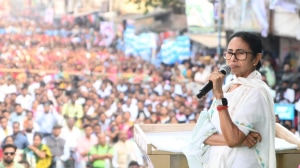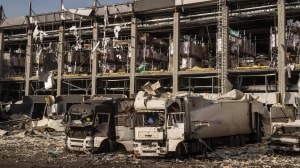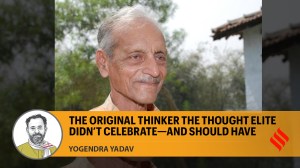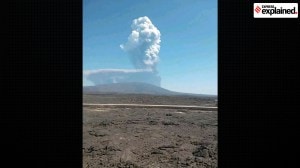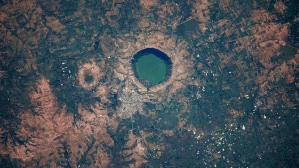Up, through highs and lows
Market volatility will stay. In India it’s tempered by investments in infrastructure and demography

July 27: 542 points down. July 30/31: 316 points up. August 1: 615 points down. The uncertainty has only begun, with the Sensex rising 50 points yesterday. This seesaw is here to stay and for investors who came in over the last four years, who so far have only met Mr High Returns, it is time to look at his shadow, Mr High Risk. Like it or not, Mr Risk accompanies Mr Returns. Sometimes investors think Mr Returns is their friend, and put in money as if the friendship will end if the increased investing stream ends — this is what has happened over the past four years, between May 2003 and today. At other times, investors feel close to Mr Risk and look to another entity, Mr Zero Risk, whose shadow is Mr Low Returns — the period between February 2000 and May 2003, for instance.
This uncertainty is here to stay. According to experts, the epicentre of this time’s financial earthquake with destruction across the world lies in risks in the US subprime lending market. Subprime lending is the offering of loans to borrowers who have bad credit histories and hence do not qualify for market interest rates but higher ones. Somewhat perverted in its creation, the problem doesn’t end in its creation or culmination or even with banks — critics argue that this encourages predatory practices that hurt borrowers, who, when they default, end up bankrupt; while bankers say they’re only helping citizens who otherwise would be financially excluded get credit.
The whizkids of Wall Street have converted this practice into a debt wish. They bought these loans from banks, repackaged them into securitised debt products called collateralised debt obligations (CDO), and sold them to investors. Before the sale, however, the bonds had to be rated and credit rating agencies gave them investment grade ratings, which in hindsight were perhaps not warranted. Again, in hindsight, investors who bought the CDOs are being termed ‘too greedy’. And as money managers told their investors that the CDOs in their portfolios were, in hindsight, all but a glossary, panic set in. And beyond all this hindsight lies a foresight: over the next few months, expect lawsuits to follow.
But what do ACC, Reliance Energy or Hindalco, the biggest losers on Nifty on August 1, have to do with CDOs? The answer: uncertainty. But does uncertainty mean that the underlying companies that comprise the various indices like Sensex or Nifty are going to stop their profits streak? The numbers say no — as the first quarter results show, net profits of 1,654 companies for the period April 1, 2007 through June 30, 2007 are up 39 per cent, compared to 32 per cent in the previous year. This is on a lower sales growth (19 per cent versus 29 per cent), implying productivity gains, and despite rising interest costs, which have grown 45 per cent compared to 25 per cent.
If companies are doing fine, is it that in a fit of irrational exuberance investors have pushed up prices to unsustainable heights? Possible — PE multiple of Sensex, even after being beaten down 841 points in just four trading sessions, is still over 20 times, way above most developed markets (UK’s and Germany’s 13, France’s 16) and emerging economies (Russia’s 11, Brazil’s 14, Indonesia’s 16), but close to Taiwan’s 21, and Japan’s and Malaysia’s 23. As I have argued earlier, the relatively higher valuation for Indian equities is nothing to worry about as it is backed by globally above-par corporate performance — with just six companies in Fortune 500, corporate India is still to attain global scale.
The path to that scale is currently being built by heavy investments — private, public and PPPs — in infrastructure. Not as much as China’s but much more than ever seen before. Physical connectivity, infrastructure of roads, ports, railways and airports will speed up goods delivery. Communications infrastructure of telecom is already doing its magic to productivity and will continue. Regulatory and financial infrastructure that oversees all these and links them through finance (banking, insurance, capital markets and pensions) will, we hope, make doing business in India a more pleasant, more profitable experience. Coming to ride that infrastructure are not only crores of rupees but billions of dollars as well.
So, with an almost certain medium- to long-term future ahead, just what is the uncertainty we’re talking about? It is short-term trading and speculation that create higher volatility. But unless you are riding this volatility full time, chances are against you. Now, ‘chance’ is a word that takes us into a realm that goes beyond investing — it takes us into a casino where, looking at the cards you’ve been dealt (that is today’s numbers), you take ‘bets’ on whether to buy more or sell out. Which suits the temperament of some people just fine.
For the larger mass of people wanting to create long-term wealth, however, these are noisy but often profitable blips. An 841 point fall in just four days that has brought the prices of many good companies down by over 20 per cent makes them more attractive than they were. It’s like buying the latest Rs 10,000 iPod for Rs 8,000 or getting a Rs 3,000 iPod Shuffle for your sweetheart for free. But why bother? Your mutual fund would be doing that for you anyway, just continue with your systematic investment plan.
When I use the word ‘you’, I mean it as India being a young nation. Compared to the current numbers where every third Indian is below 15, by 2020 the average Indian will be 29 years old (average Chinese and American will be 37, average Japanese 48). These young people will be closer to Mr Returns because they’re not mortally afraid of Mr Risk. They will enter, stay in and profit from the markets.



- 01
- 02
- 03
- 04
- 05








